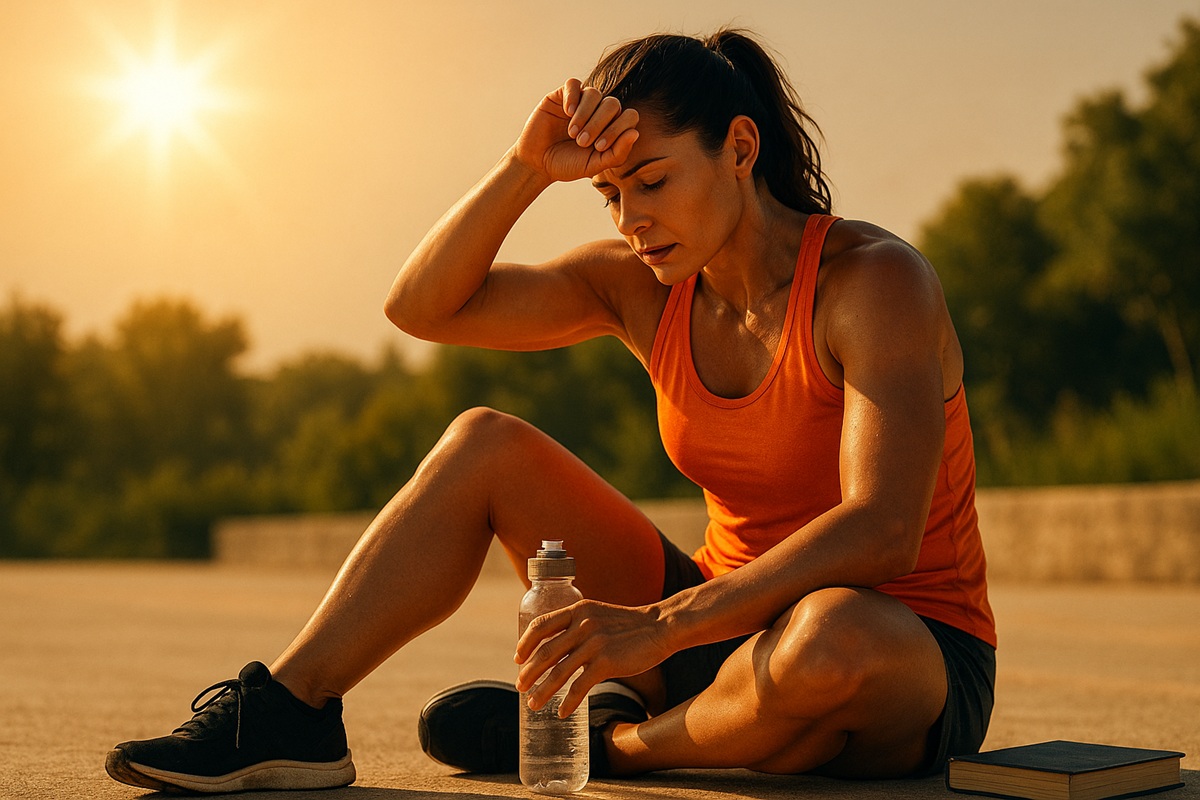Beat the Heat: Essential Safety Tips for Exercising in Hot Summer Weather

I’ll never forget it. It was a scorching July afternoon, the kind where the air feels thick enough to chew. I was in my early twenties, full of more bravado than sense, and decided to go for a "quick" 5-mile run. Long story short, I ended up sitting on a curb two miles from home, dizzy, nauseous, and feeling like I’d been hit by a truck. I had completely underestimated the power of the sun. That day taught me a hard lesson: your ego doesn't care about the temperature, but your body sure does. And that’s why we need to talk about hot weather exercise.
Look, the summer months are amazing for getting active outdoors. But if you’re not smart about it, you risk turning a great workout into a trip to the emergency room. Trust me, I’ve seen it happen to clients, and I’ve been that guy myself. So let's skip the textbook lecture and get into what actually works for staying safe when you decide to exercise in heat.
Hydration Isn't Just About Chugging Water
You’ve heard "drink more water" a million times. Duh. But it’s a bit more nuanced than that. When you’re sweating buckets, you’re not just losing water; you’re losing electrolytes — sodium, potassium, magnesium. These are the minerals that help your muscles function correctly.
I remember a client, Mark, a 45-year-old dad trying to get back in shape. He was drinking tons of water but still getting terrible cramps during his workouts. The culprit? He was sweating out all his electrolytes and not replacing them. We added an electrolyte tablet to his water bottle, and it was a game-changer.
My practical advice:
- Pre-hydrate: Start drinking water an hour or two *before* your workout. Don't start on an empty tank.
- During your workout: Aim for a few big gulps every 15-20 minutes. If you're training for over an hour in the heat, consider a sports drink or an electrolyte supplement.
- Post-hydrate: Don't stop when the workout is over. Keep sipping throughout the day. Your urine should be a pale yellow color. If it’s dark, you're dehydrated. It's that simple.
Timing Is Everything: Become an Early Bird or a Night Owl
This seems obvious, but you’d be surprised how many people I see jogging at 1 PM when the sun is trying to murder us all. The hottest part of the day is typically between 10 a.m. and 4 p.m. Your best bet for summer workout safety is to avoid this window like the plague.
I get it, you have a life. A job. Kids. But your health has to come first. I switched to being a 5 AM workout guy years ago, and while it was brutal at first, the feeling of being done before the world wakes up and the heat kicks in is unbeatable. For others, a post-dinner walk or evening gym session works better. There's a whole debate on morning vs. evening workouts, but when it comes to the summer, the best time is simply the coolest time you can consistently manage.
Listen to Your Body (No, Really, LISTEN)
This is the most important tip, and the one most people ignore. Your body is incredibly smart. It sends you signals when something is wrong. That little voice telling you "this is too hard" or "I feel weird"? That’s not laziness; it's self-preservation. Learning to listen is key for heat exhaustion prevention.
Signs you’re in the danger zone:
- Dizziness or lightheadedness
- Nausea
- Headache
- Goosebumps in the heat (a really bad sign)
- Excessive, heavy sweating (or a sudden stop in sweating)
If you feel any of these, stop. Immediately. Find shade, drink some water, and cool down. There is zero shame in cutting a workout short to protect your health. Pushing through is how you end up in serious trouble. This isn’t just about the heat; it’s a fundamental principle of avoiding injury. For a deeper dive on this, check out my post on how to stay injury-free as a beginner.
Your Gear Matters: Dress for the Job
Ditch the dark, heavy cotton t-shirts. They're like wearing a personal sauna. Cotton absorbs sweat and holds it against your skin, which can actually make you hotter. Instead, opt for light-colored, lightweight, moisture-wicking synthetic fabrics. They pull sweat away from your body, allowing it to evaporate and cool you down.
A hat and sunglasses are non-negotiable for me. They protect you from the sun and reduce the strain on your eyes. It’s a simple thing, but it makes a huge difference in comfort and safety.
The Takeaway: Be Smart, Not a Hero
Look, I love pushing my limits as much as anyone. But there's a huge difference between pushing for an extra rep and pushing yourself into heatstroke. The goal is long-term, consistent progress, not one heroic-but-stupid workout that sidelines you for a week.
So, your first step? Before your next workout, just check the weather forecast. That’s it. Acknowledge the temperature and make one smart adjustment based on it. Maybe you go a bit earlier. Maybe you pack an extra water bottle. It's these small, smart choices that keep you in the game. I’ve written more about this in my detailed guide on training safely in the summer heat if you want more ideas.
Stay safe out there. And remember, the gym will still be there tomorrow.